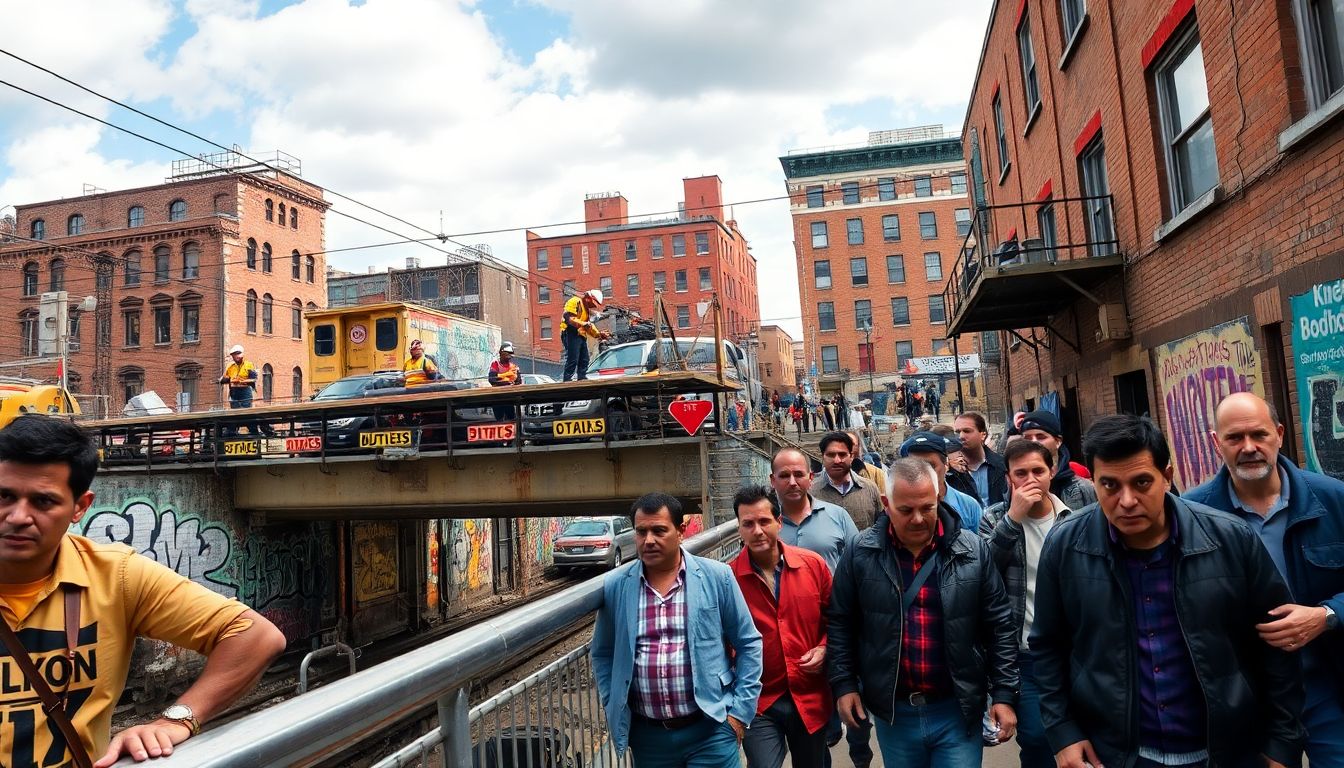Introduction
Bushwick’s elevated train is a major component of daily life. It transports individuals to work, school, and leisure. Lately, though, constant maintenance work is causing residents serious aggravations. Trains are postponed or terminated, making schedules go haywire. It’s clear that this affects all individuals—riders, nearby businesses, and neighborhoods. Residents yearn for solutions that keep trains safe without hindering day-to-day life.
The Current State of Bushwick Elevated Train Maintenance
Schedule and Maintenance Practice Overview
Maintenance of the Bushwick elevated line is a regular part of keeping the tracks safe. Schedules are planned during off-peak hours or overnight to cause as little disruption as possible. However, with aging infrastructure, repairs are more common than residents would like. The goal is to prevent future issues on a larger scale, but the ongoing work causes present inconvenience.
Recent Maintenance Projects and Disruptions
Over the past several months, some major repairs have lasted longer than expected. For example, a recent track upgrade caused service reductions for almost two weeks. Streets were closed, and buses replaced train service. Local stores lost customers as people avoided the area. Such disruptions make daily commutes harder than ever.
Data and Metrics on Service Downtime
According to transit records, Bushwick lines saw a 20% increase in delays in the last year. Cancellations also happen some 15% more often compared to other parts of NYC. Repairs also take longer—the average repair takes three days. In comparison with other neighborhoods, these figures show that Bushwick has more frequent and severe disruptions.
Impact of Maintenance-Related Disruptions on the Community
Difficulties for Daily Commuters
Train delays translate into longer travel for the majority of residents. Some have to take buses or walk extra miles. It adds hours to their day. Students, commuters, and shoppers all suffer. The inconvenience piles up, and daily life is more stressful.
Economic and Business Implications
The local businesses rely on steady foot traffic. When the trains are down, fewer customers visit. Delivery trucks are also delayed, affecting inventory and sales. Small businesses see fewer sales when this happens, affecting their own bottom line. Ongoing disruptions put the neighborhood’s economic health at risk.
Safety and Soundness Concerns
Residents worry about structural safety during maintenance. Cracks or loose material can be hazardous if not properly inspected. Falling objects or unstable tracks have been a worry to some members of the public. Their concern highlights the need for safer, more transparent work.
Expert Opinions and Public Reaction
Transportation Authority Opinions
NYC Transit authorities explain that maintenance needs to be done to make trains safe in the long term. In their opinion, repairs are well planned, but complex projects do take longer. They even acknowledge that there needs to be more communication with the public.
Community and Labor Reaction
Residents and community leaders are angry. Some protested, demanding less disruption. Business owners speak of lost business as a threat to their livelihood. Labor unions that represent workers doing the repairs state that personnel are trying their best but need better planning and fairness.
Comparative Analysis
The experts suggest that other cities like Chicago or London provide better methods of maintenance. They use quicker repair tools and have better notifications. NYC can take a lesson from these places in order to minimize delays while having safe infrastructure.
Challenges and Limitations of Elevated Train Maintenance
Technical and Infrastructure Challenges
Aging tracks and equipment in a dense city like Bushwick make repairs complicated. Confined work spaces and obsolete components slow things down. Special equipment and trained personnel are needed, driving up costs.
Funding and Budget Constraints
Money is a significant issue. Limited budgets make projects get rushed or delayed. Urgent repairs are typically prioritized while minor ones backlog. Underfunded, maintenance gets overlooked and interruptions continue.
Coordination and Communication Issues
Tenants report not being notified early enough. Notifications are late or unclear. Poor communication leads to confusion and frustration. Good planning and warnings are at the core of solving this problem.
Solutions and Recommendations for Maintenance Outcome Improvement
Better Communication Strategies
Transit authorities should offer timely notifications via texts, emails, or apps. Real-time notifications of delays allow commuters to make plans. Open communication leads to trust and patience.
Developing Less Disruptive Maintenance Methods
New technology like fast repair techniques or pre-fabricated track can minimize repair times. Faster, neater methods mean less time without service. Innovation is quite possibly the solution to smoother upgrades.
Community Outreach and Input
Neighborhood meetings and online discussion forums invite residents to make their voices heard. Listening to locals allows authorities to shape repairs that are less obtrusive. Transparency in decision-making does make a difference.
Policy and Funding Advocacy
Campaign for more transit repair investment. Lobbying for infrastructure investment can speed up projects. Sound policy also prioritizes safety and neighborhood health.
Conclusion
The ongoing repairs on Bushwick’s elevated train are the cause of real frustrations. Delays and disruptions in service wear on residents and local businesses. Yet fixing infrastructure is critical for safety and long-term development. Finding the right balance is crucial. It’s time for transit officials, policymakers, and communities to work together for smarter, less intrusive solutions. With better planning and transparency in communication, Bushwick can enjoy a safer, more reliable train system without sacrificing everyday life.
